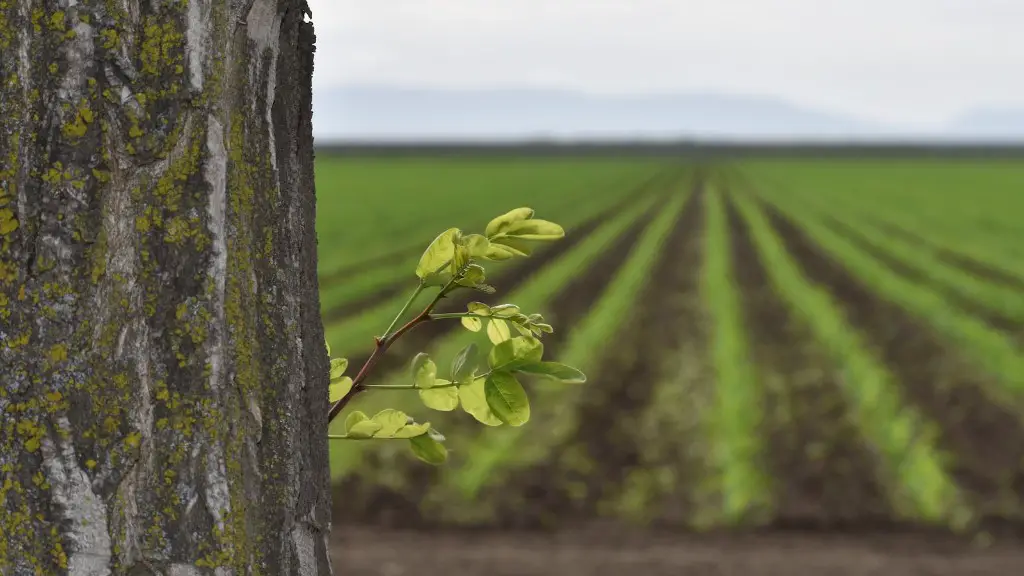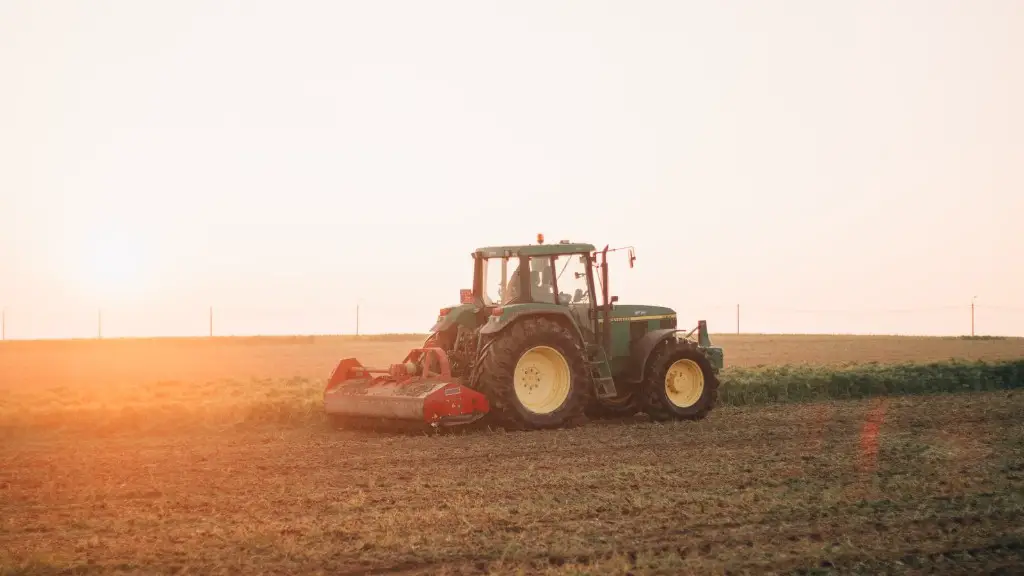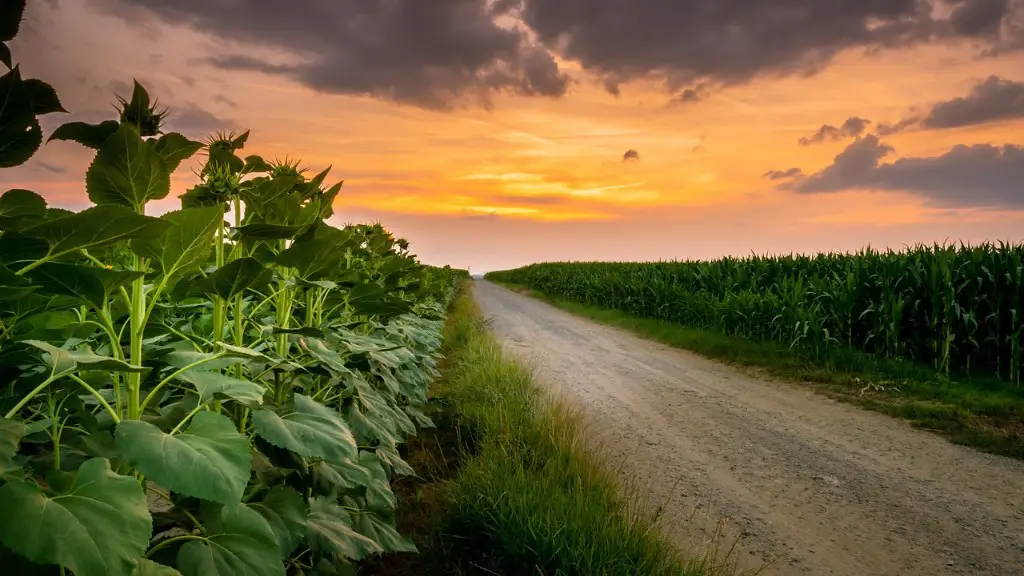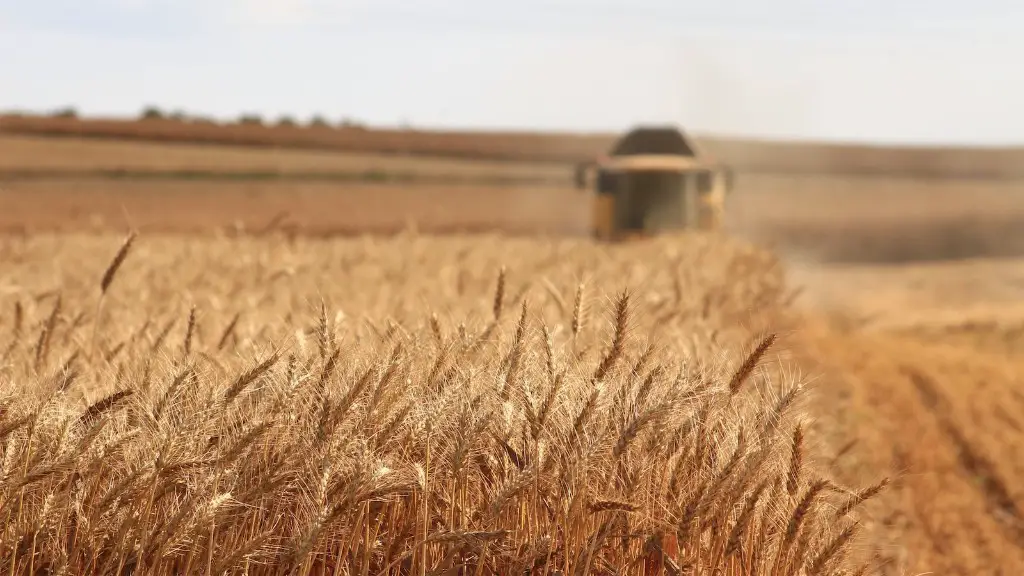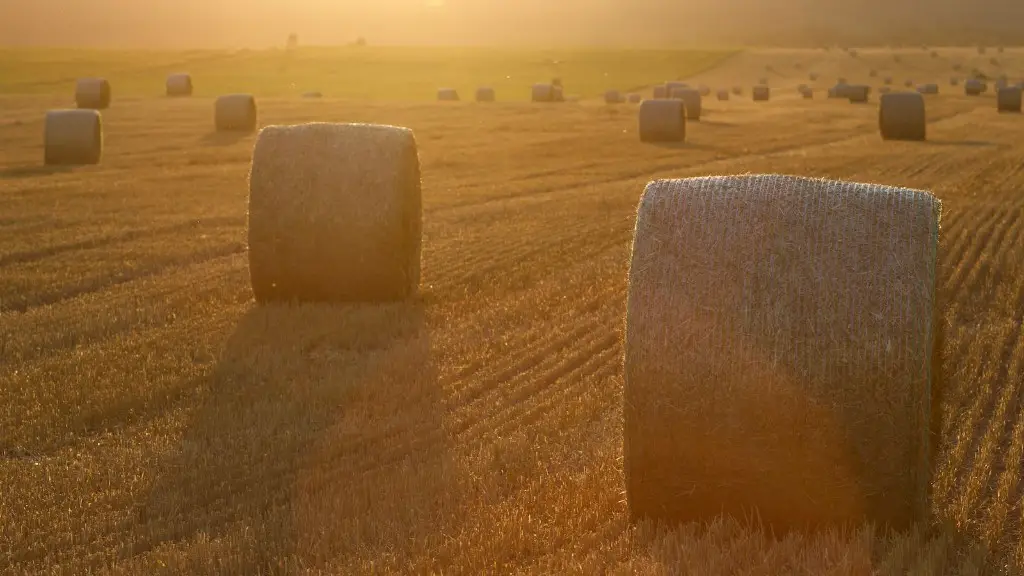Agriculture is one of the largest users of land on our planet. Estimates suggest that it uses nearly 40% of the Earth’s total land area, leaving much of the rest to wild habitats and other human activities. Agriculture has drastically impacted land use over the centuries, from the growth of modern industrial-scale agriculture to the expansion of urban areas. Despite the impacts that agriculture has had on land, it also provides an essential resource for human civilization and is vital for our global food security.
Agricultural land usage takes up a lot of space, but it also provides many important benefits to societies. A huge amount of land is used to raise crops and livestock, but this land also plays an important role in providing habitat for wildlife, microbiome preservation, and nutrient-rich soils necessary for the continuation of agricultural production. Agriculture also helps to provide food and nutrition to many people in developing countries, ensuring their survival.
The way land is used for agricultural production largely depends on the type of agricultural activity. Industrial-scale growing of certain types of crops requires large amounts of land to be cleared and organized in grids. On the other hand, small-scale farming and more traditional types of agriculture require less land for production, but more land may be needed for temporary grazing of livestock or harvesting of wild foods.
Agricultural production often has an impact on the environment. Clearing land for farming can cause air and water pollution and soil degradation, as well as loss of vital ecosystems. In some cases, land is also overused for agricultural production, resulting in soil erosion, nutrient depletion, and loss of biodiversity. To avoid these negative impacts, agricultural practices and land management systems need to be carefully managed and improved.
In order to effectively manage land use and limit the environmental impacts of agriculture, changes in how land is allocated and used are necessary. Decentralized land management, where local stakeholders are involved in decision-making, is often recommended as an effective way of doing this. Additionally, conservation agriculture, which combines traditional practices with sustainable agriculture, can help to reduce environmental impacts while still providing sufficient crop yields.
Temporal Land Usage by Agriculture
Agriculture is a temporal land use, meaning that the land used for it is constantly changing and shifting over time. Depending on the particular crop, the land used for agriculture can range from permanent and stable land to land that is used for just a few months in the year. This means that the impacts of agriculture can also fluctuate in their severity and can be more severe at certain times of the year.
Crop rotation, which involves the planting of different crops in the same field, is often used to minimize the impact of agricultural land use. By rotating crops, soil fertility and nutrient levels can be maintained, reducing the need for chemical fertilizers, while also reducing the risk of pest infestations and disease. Additionally, rotating crops can help to ensure that land is not overused, making it more efficient.
Impact of Agricultural Land Usage on Biodiversity
Agricultural land use can have a significant impact on biodiversity, both positive and negative. The conversion of land for agriculture often results in the loss of habitats for wildlife, and the amount and type of land conversion significantly affects the health and distribution of species in a given area.
Conservation areas have been established to protect biodiversity from the impacts of agricultural land use. These areas typically include wilderness areas, resource extraction sites and agricultural production sites that are managed in a sustainable way. By ensuring that these sites are managed and monitored in a sustainable manner, the negative impacts of agricultural production can be minimized, while still providing resources and food to people living in the area.
Agriculture is also often seen as a threat to wildlife, due to habitat destruction and competition for resources. However, agricultural land use can also provide significant benefits for wildlife, such as providing a diverse habitat and a source of food. Additionally, the use of certain farming practices, such as crop rotation and integrated pest management, can create more diverse habitats than those found in a strictly cleared and managed agricultural landscape.
Agricultural land use also affects the landscape’s hydrology. In particular, the conversion of land to cropland causes changes in the movement of surface water and groundwater, which can have a range of impacts on the environment. By managing agricultural land use in a sustainable manner, these changes can be minimized, helping to ensure the health of our planet’s water resources.
Economic Effect of Land Usage for Agriculture
Agriculture has a direct economic impact on both local and global levels. The adoption of certain agricultural practices can help to reduce poverty in some of the world’s poorest regions, as well as providing employment and income opportunities for many people. Additionally, agricultural production can help to feed communities, providing a more stable and secure food supply.
Agricultural production also plays an important role in global trade. Agricultural products are traded around the world and help to provide essential resources for many economies. This can benefit both developed and developing nations, as agricultural exports can provide essential resources which are necessary for economic development.
Agricultural production can also benefit the environment, as certain types of farming practices can help to reduce greenhouse gas emissions. For example, certain no-till farming methods reduce the need for plowing and can help to limit the amount of carbon dioxide released into the atmosphere.
Agriculture is a vital part of our planet’s economy, but it can also have a significant impact on the environment. Therefore, it is essential that agricultural practices and land management systems are carefully managed and improved in order to ensure a sustainable future for global agriculture.
Impact of Global Climate Change on Agriculture
Global climate change has had a significant impact on agriculture and land use, particularly in the areas of crop production and water resources. Rising temperatures, increased water stress, and extreme weather events have had a range of impacts on agricultural land use and production.
In particular, rising temperatures have caused earlier maturation of some crops and increased the frequency of extreme weather events, such as drought, flooding, and hail. This has had a direct impact on the amount of land suitable for certain crops, as well as the quality and quantity of the crop yields. Additionally, climate change has resulted in the spread of some pests and diseases, further reducing the amount of land suitable for agricultural production.
In order to cope with the impacts of climate change on agriculture and land use, farmers are increasingly turning to climate-resilient agricultural practices, such as precision farming and water harvesting. Additionally, crop varieties that can tolerate or even thrive in a changing climate are being developed in order to ensure that agricultural production can continue to meet global food needs.
Climate change also affects land use for other purposes, such as urbanization and resource extraction, and can have an impact on global food security. This makes it essential that land is used and managed sustainably, in order to ensure the long-term viability of agricultural production.
Agricultural Practices That Enhance Environmental Protection
The conservation of natural habitats and ecosystems, as well as the overall health of the environment, can be enhanced by the adoption of certain agricultural practices. Sustainable agriculture, which integrates environmental protection with crop production, is often seen as the ideal way to protect and enhance the environment.
Agroecology is a particular type of sustainable agriculture, which focuses on the use of ecological processes to enhance productivity and create agroecosystems that are beneficial for both humans and the environment. Agroecology combines traditional agricultural practices with modern methods, and often involves the adoption of conservation techniques such as agroforestry and crop rotation.
Organic farming is another form of sustainable agriculture which reduces the use of synthetic inputs and focuses on natural processes for crop production. Furthermore, organic farming can help to reduce pollution and protect soil fertility, providing significant environmental benefits.
Additionally, practices such as integrated pest management, buffer strips, and minimum tillage are increasingly being adopted in order to reduce agricultural impacts on the environment. These techniques can help to prevent pest outbreaks, reduce soil erosion, and minimize nutrient runoff, making them essential tools for the adoption of sustainable agricultural practices.
Scale of Land Usage
The land used for agricultural production varies greatly in scale. For example, in developing countries, small-scale farmers often use a very small amount of land to produce food, while in developed countries large-scale agricultural operations commonly require vast areas of land for crop production and animal grazing.
Agriculture is a major land user at a global level, and the land used for it will likely continue to expand in the future. It is therefore essential that sustainable practices are adopted to ensure that the land used for agriculture is managed in a responsible manner.
The way land is used for agriculture also varies according to region and type of crop. For example, areas with a high population density may have much less land available for agricultural production than those in more rural areas. Additionally, crops such as rice and wheat require larger areas of land than crops like vegetables and fruits.
The scale of land used for agriculture is an important factor to consider when assessing land use, as larger land areas may require more resources and would have a bigger environmental impact. Therefore, it is essential that land is used responsibly and in a way which maximizes its productivity while minimizing its environmental impacts.
